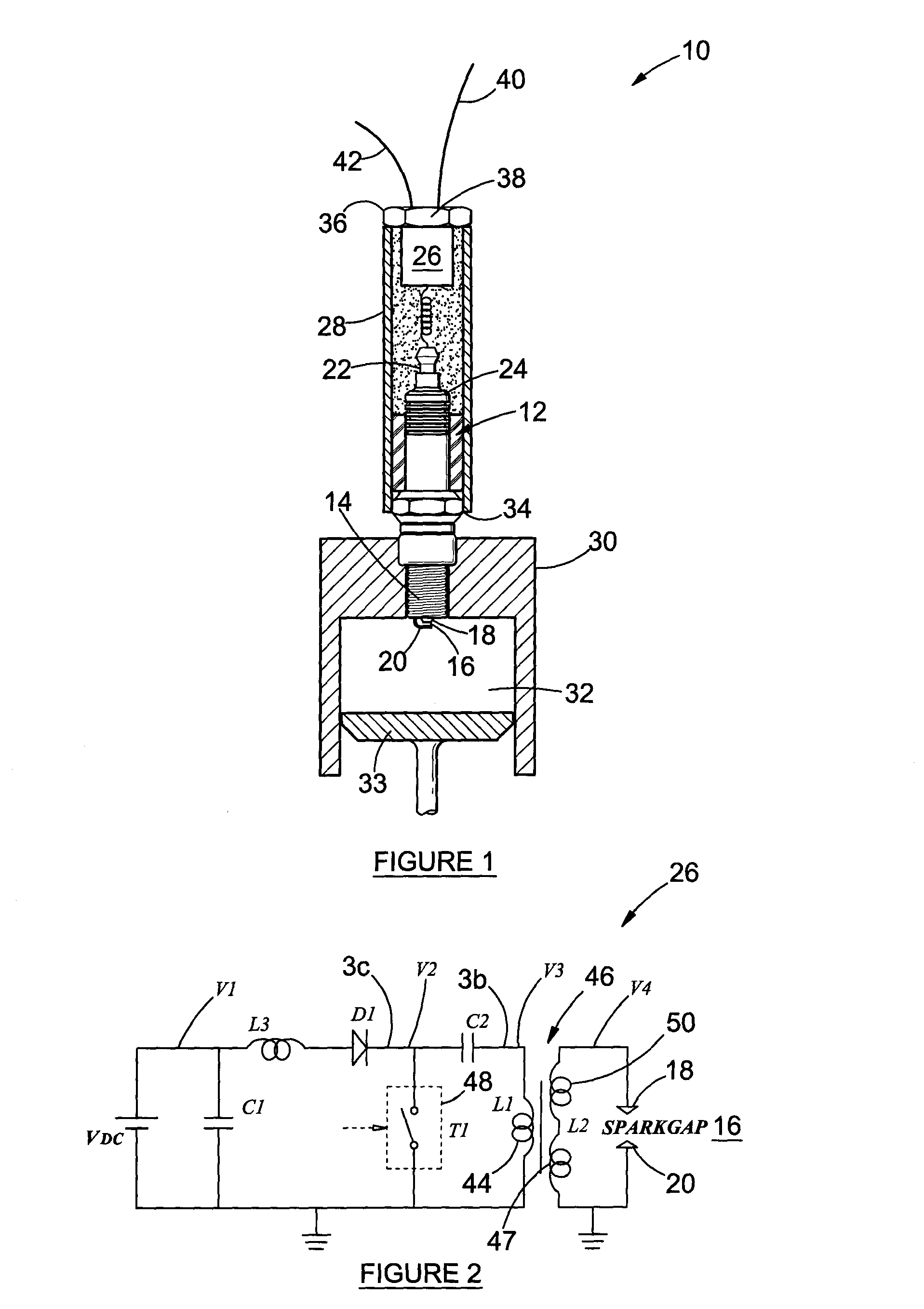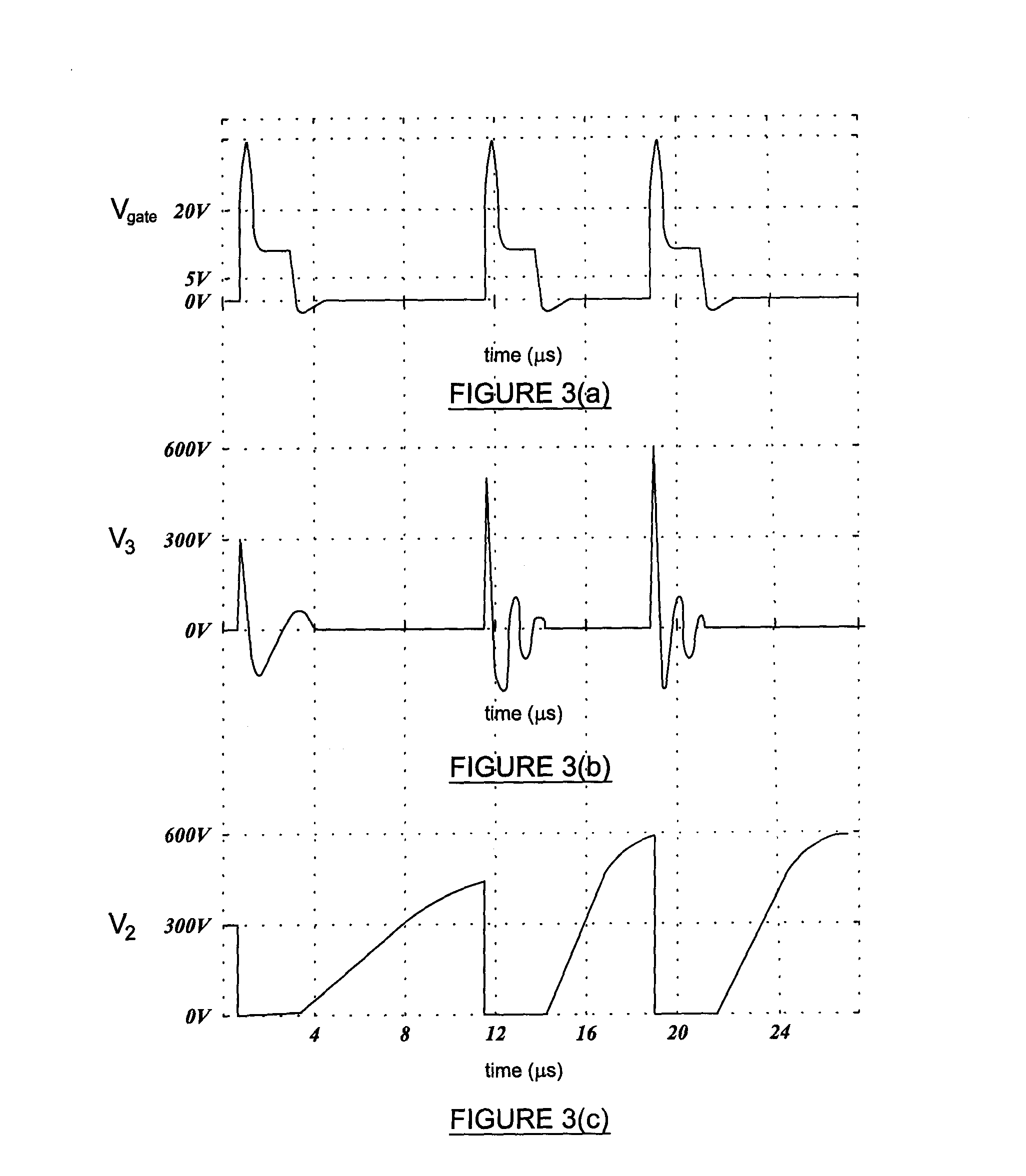Ignition system
a technology of ignition system and ignition coil, which is applied in the direction of spark plugs, electric control, machines/engines, etc., can solve the problems of high secondary winding inductance, high cost, and inefficient systems
- Summary
- Abstract
- Description
- Claims
- Application Information
AI Technical Summary
Problems solved by technology
Method used
Image
Examples
first embodiment
[0065]the drive circuit 26 (in the form of a capacitor discharge circuit) is shown in more detail in FIG. 2. The circuit 26 comprises a first capacitor C1 connected in series with a primary winding 44 of a local transformer 46 and a fast switching power device T1 or 48. A secondary winding 50 of the transformer is connected to the first electrode 18, which defines spark-gap 16 with grounded second electrode 20.
[0066]The power switching device 48 may comprise a power insulated gate semiconductor device, such as a MOSFET or IGBT and is preferably driven in accordance with the method of and with a drive circuit of a kind similar to that disclosed in the applicant's U.S. Pat. No. 6,870,405B1, the contents of which is incorporated herein by this reference.
[0067]As best shown in FIGS. 2 and 6, the circuit 26 utilizes a single MOSFET 48 to generate a voltage of a few hundred volts to charge capacitor C1 as well as to switch the capacitor C1 to generate the high voltage across the gap 16. I...
second embodiment
[0078]the drive circuit 26 is shown in more detail in FIG. 9. In this embodiment, the primary winding 44 of the transformer 46 is connected to a power oscillator 56. This oscillator 56 is connected to an energy source 58, all inside the housing 28. The energy source is connectable via cable 42 to DC voltage source outside of the housing and the oscillator has a trigger input connection via cable 40 to the outside of the housing. The secondary winding 50 of the transformer 46 is weakly coupled to the primary winding 44. The secondary winding 50 is connected in series with the spark-plug 12 and the energy source 58. The secondary winding inductance, capacitance and the spark-gap capacitance forms an LC resonance circuit with a certain resonance frequency. The transformer 46 may have a core 47 with a square hysteresis, this means that the secondary winding will have a relatively high inductance for low current, but at a certain higher current, the inductance will suddenly become much s...
PUM
 Login to View More
Login to View More Abstract
Description
Claims
Application Information
 Login to View More
Login to View More - R&D
- Intellectual Property
- Life Sciences
- Materials
- Tech Scout
- Unparalleled Data Quality
- Higher Quality Content
- 60% Fewer Hallucinations
Browse by: Latest US Patents, China's latest patents, Technical Efficacy Thesaurus, Application Domain, Technology Topic, Popular Technical Reports.
© 2025 PatSnap. All rights reserved.Legal|Privacy policy|Modern Slavery Act Transparency Statement|Sitemap|About US| Contact US: help@patsnap.com



